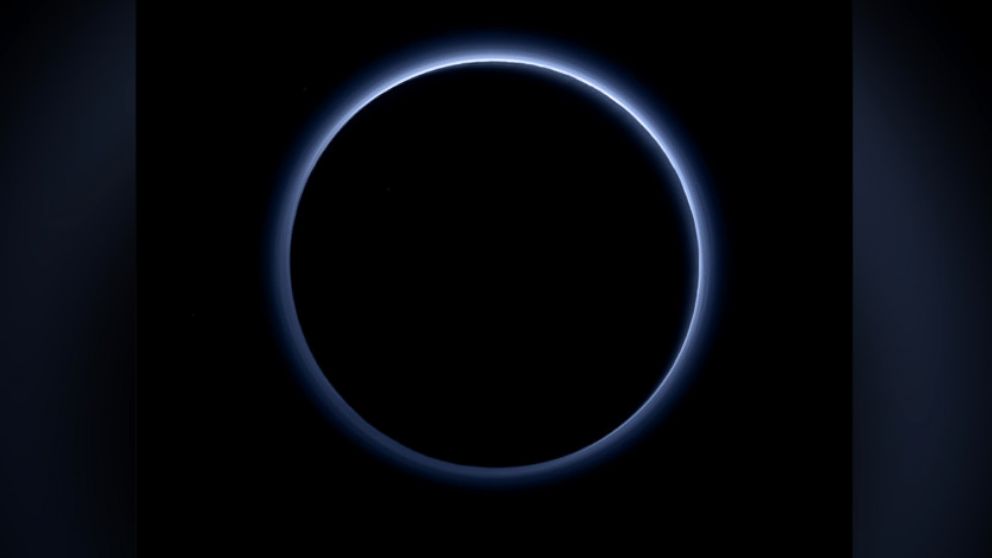New Horizons Space Probe Finds Brilliant Blue Skies, Water Ice on Pluto
Gorgeous blue skies stun scientists as New Horizons sends back more data.

— -- Check out the brilliant blue hue surrounding Pluto!
NASA's New Horizons space probe sent back stunning photos from the dwarf planet, revealing it has blue skies and water ice on its surface.
"Who would have expected a blue sky in the Kuiper Belt? It’s gorgeous," Alan Stern, New Horizons principal investigator, said in a statement.
The sky is painted blue when haze particles, which NASA said are likely gray or red, scatter blue light.
The second finding released today shows small regions of water ice on Pluto, although it wasn't initially obvious until scientists reviewed data from the Ralph spectral composition mapper on New Horizons.
"Large expanses of Pluto don’t show exposed water ice because it’s apparently masked by other, more volatile ices across most of the planet," Jason Cook, a science team member at the Southwest Research Institute in Boulder, Colo., said in a statement. "Understanding why water appears exactly where it does, and not in other places, is a challenge that we are digging into."
The piano-sized probe is speeding through the Kuiper Belt, an area at the edge of earth's solar system. After the intensive data transmission process, NASA is considering another flyby of a Kuiper belt object known as 2014 MU69 that orbits nearly a billion miles beyond Pluto.
New Horizons loses about a few watts of power each year, according to NASA, but is estimated to have as much as 20 years left in its life expectancy. NASA said in its latest update the probe is 3.1 billion miles from earth and all systems continue to operate normally.




